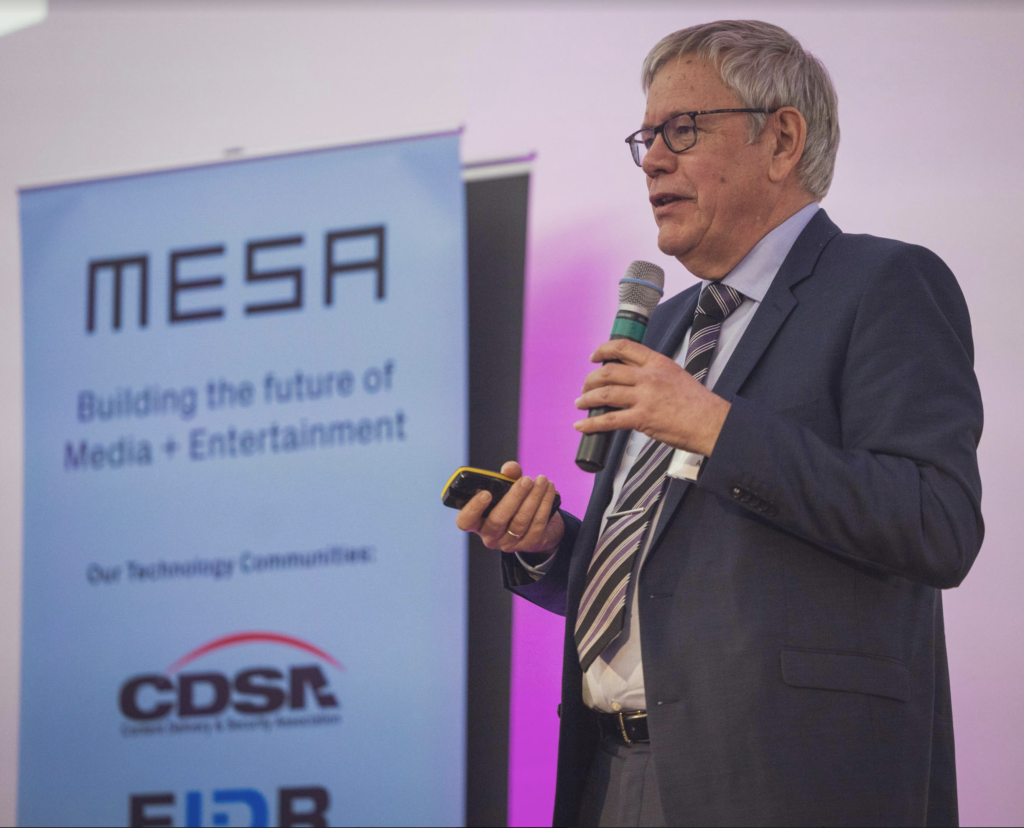M+E Europe
CWMF: AppTek Explores the ‘Next Frontier’: Automatic Dubbing
Story Highlights
Scientists have upped their game and decided to take on the next frontier in human language technology with automatic interpreting, re-voicing and dubbing, according to Volker Steinbiss, managing director of applications technology at AppTek.
Why even use automatic dubbing when professional dubbers do 22 March, at the start of the session “Automatic Dubbing – The Next Frontier” at the sixth annual Content Workflow Management Forum.
He asked attendees and those viewing the session virtually to wait a few minutes for a demo that will show why automatic dubbing is a viable solution.
The event was held in conjunction with the eighth annual Content Protection Summit Europe at the Cavendish Conference Centre in London and as a virtual event via the MESAverse, allowing for remote attendance worldwide.
During the session, Steinbiss provided video examples of the still-nascent speech-to-speech translation technology, discussed the state of the art and the challenges that remain to be tackled. He also touched on use cases of the technology available today, in a fully automated mode and in a human-in-the-loop scenario.
AppTek’s automatic dubbing technology solution features automatic speech recognition (ASR), timed neural machine translation (MT) and adaptive text-to-speech (TTS) with voice print, prosody (patterns of stress and intonation in a language), and volume-emotion for natural-sounding speech.
 The automatic dubbing solution is “not perfect,” Steinbiss conceded before his demo of it, but said, “you might be surprised” by the quality of it, asking attendees and viewers to be open to the technology and possibly change their perspective.
The automatic dubbing solution is “not perfect,” Steinbiss conceded before his demo of it, but said, “you might be surprised” by the quality of it, asking attendees and viewers to be open to the technology and possibly change their perspective.
After the auto dubbing demo, he said that’s where the technology is now and “fine-tuning” can be done and it will be “improved over time,” adding a “very large number of languages” – about 50 – are available already.
Steinbiss asked those who saw and heard the demo to provide feedback to him and AppTek – positive and negative – so that improvements can be made.
Possible use cases include: quick content delivery across language barriers; “post-editing the glitches”; and as a professional tool for the dubbing creation process, supporting translation, according to AppTek.
“The company handles all aspects of speech translation, including dealing with noise, hesitations, repetitions, and speech recognition errors,” AppTek says at its website. “Our speech translation systems automatically predict punctuation marks and correct word casing. Moreover, our unique solution for automatic line segmentation allows us to produce broadcast-ready subtitling files in multiple languages either directly from the speech signal (in combination with our ASR technology), or from a single subtitle template.”
All of its subtitle translation systems are “adapted to broadcast/entertainment content and style, so that very little post-editing efforts are necessary to obtain high-level quality,” it says. Online streaming solutions for subtitling are also provided by the company upon request, it adds.
To listen to the presentation, click here.
To download the presentation deck, click here.
The sixth annual Content Workflow Management Forum was produced by MESA in association with CDSA, the Hollywood IT Society (HITS), the Smart Content Council, the Content Localisation Council, and presented by Convergent Risks, with sponsorship by archTIS, NAGRA, Signiant, Whip Media, AppTek, BuyDRM, LinQ Media Group, OOONA, ZOO Digital, EIDR and Titles-On.
The eighth annual Content Protection Summit Europe was produced by MESA in association with the Content Delivery & Security Association (CDSA), and presented by Convergent Risks, with sponsorship by archTIS, NAGRA, Signiant, and BuyDRM.









